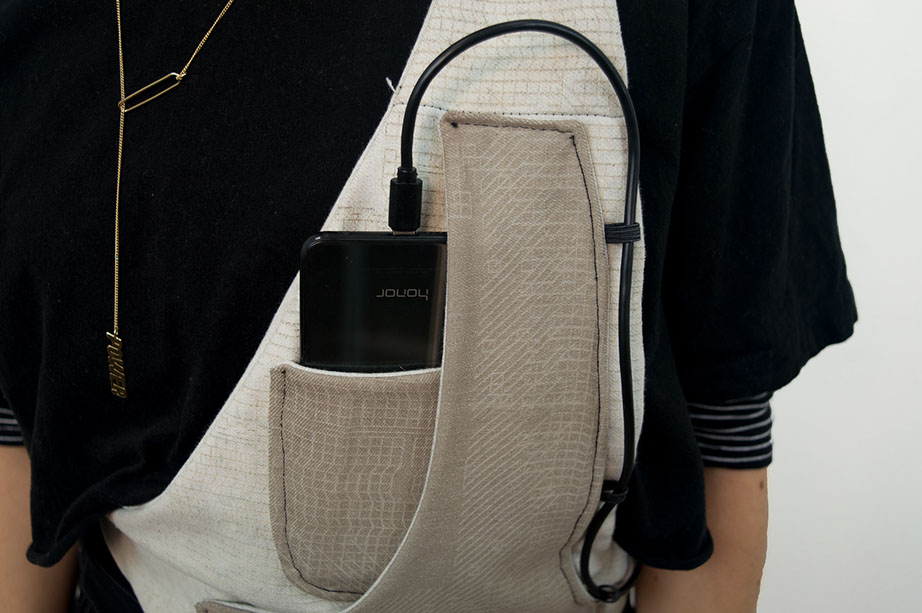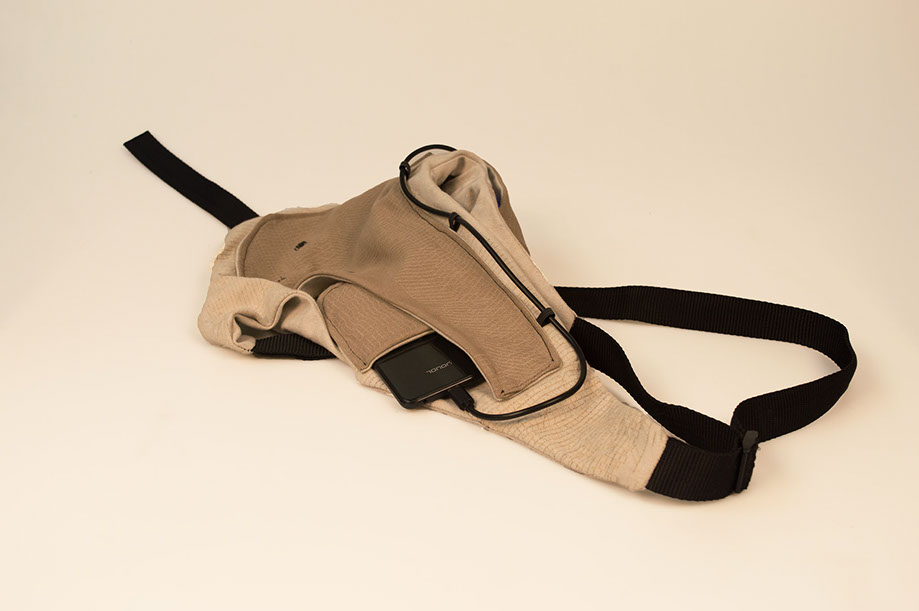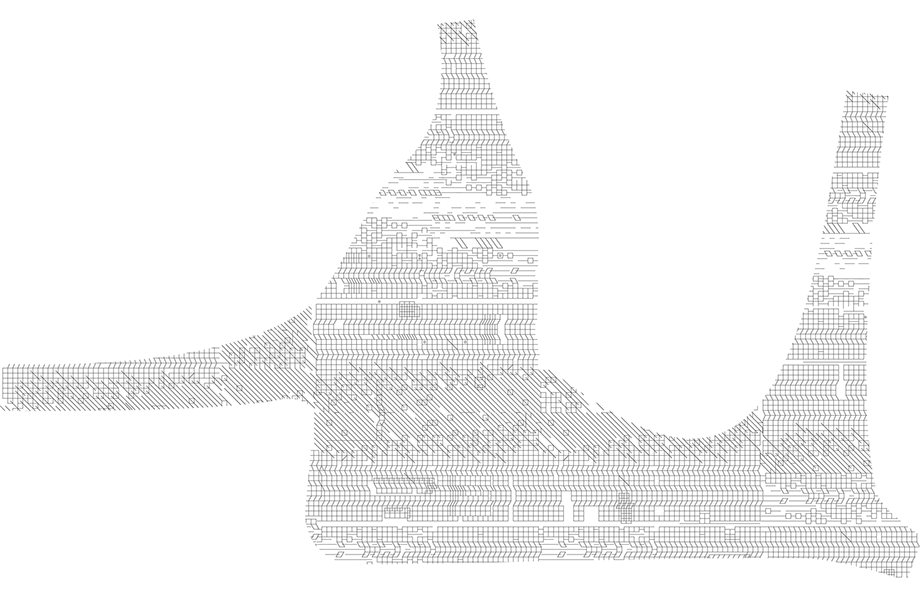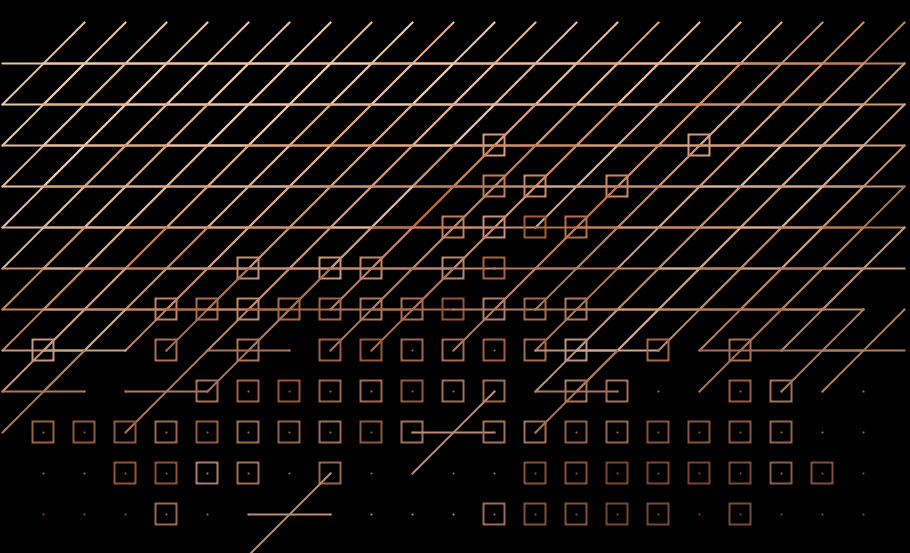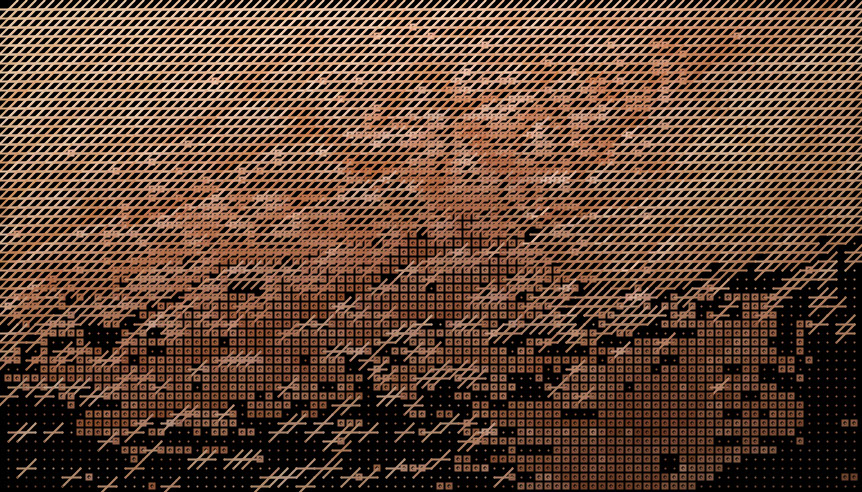GROWTH
WORK
HUMANOID BAG
A must-have accessory to carry our future human identity.
Digital Craftmanship
Hiding secrets in code
Ultra-personalized wearables
In collaboration with:
Charlotte Kuijper
Dave Heijkoop
In a digitally transformed world, our smartphones have become an extension of the body. External devices become a part of our essentials, which before were just our own flesh and blood.
Our human identity is becoming partly digital. That's exactly what this humanoid bag is made to carry: your smartphone and power-bank, to always stay connected.
The Humanoid Bag functions as an extension of our unique skin. Its print is generated by digitally transforming texture of a piece of skin, through code. In turn, the generated pattern is laser-engraved on denim.
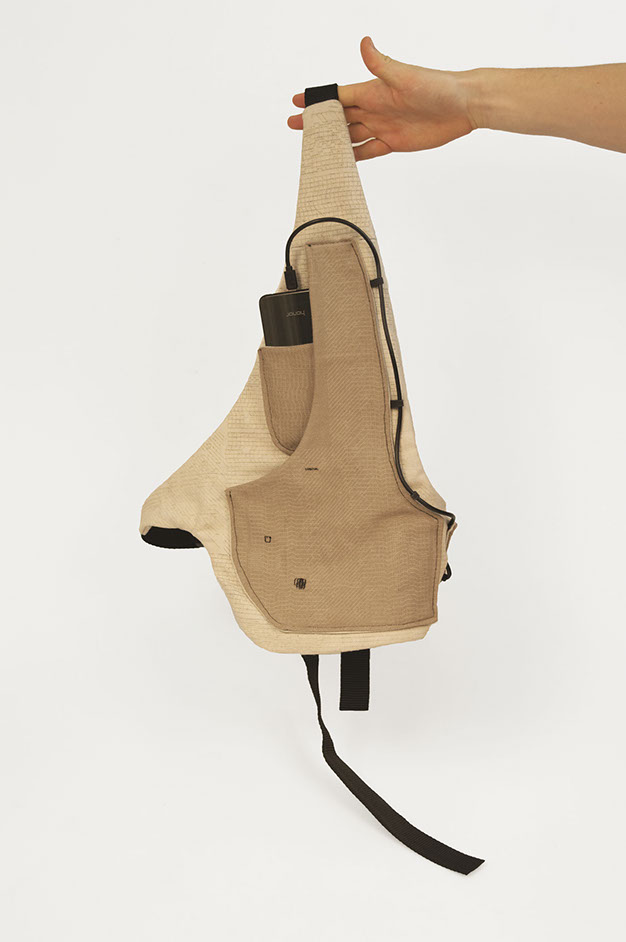
OVERVIEW
Elective: Digital Craftsmanship
Goal: Create a design that uses data to embody human desires.
Competencies: MDC, TR, CA, DRP, TC
KEY LEARNING POINTS
1. Computing of data as part of the end-product.
2. Technology as a way to evoke a more personal relationship between users, their data and their everyday wearables.
3. Acknowledging the relation between math, data and computing and finding a tangible application.
4. TC: Recognizing the key values in the concepts of others, and making them aware of it.
Explanation
A series of lectures introcuded me to applications of vector math in Processing and the use of data in fashion, art, and secrets throughout human history. We were to make a bag that embodied the human desires indepence and ownership. The first weeks we recreated existing bag models in paper and carton to explore how they were constructed. For midterm we made our own versions that explored conceptualizing human desires. We documented our findings in an annotated portfolio that we used to present and discuss. In the second half, we realized our midterm concept and explored the use of data for digital crafting techniques; 3d printing, laser cutting and digital embroidery. Our final concept and prototype was met with enthusiasm and got graded very well.
Reflection
In the design process I found a way of working that stopped me from overthinking; create first, conceptualize after. Andersen noted that I was great at analyzing the core lecture theme's and advised that I should use this to make others aware of key values in their concept. A great synergy within my team allowed me to pinpoint the strength and weaknesses in their concepts and find a relation between the most intriguing ideas; the structure of a shoulder bag, pockets for phones, humans as owners of our body.
Through extensive exploration of preparing textiles for the lasercutter (such as applying conditioner, sanding, stiffening) we found a way to give jeans material the texture of skin. With previous experience in Processing, I explored different ways of using data and math to find a way of image processing a picture of skin. I based my code on what I learned from the lecturer Loe Feijs and open-source code. I made it my own, by re-structuring into modules. This made the code part of the concept, by using personal data (skin pigmentation) to customize the output. This structure also allowed for creating an aesthetic abstraction of skin that we laserengraved on our bag.
